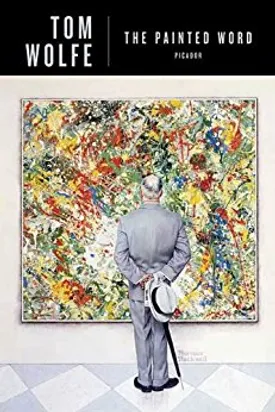The Painted Word by Tom Wolfe
The Painted Word is an insightful and influential book written by master literary social critic Tom Wolfe. Published in 1975, the book takes a close look at the world of contemporary art, exploring the often tenuous relationship between artistic merit and the words used to explain and promote it. Wolfe's book has shaped the way many think about the seemingly elitist and often impenetrable world of modern art, and has helped to demystify the shifting trends and critical paradigms that drive the culture.
Tom Wolfe wrote The Painted Word in response to the wave of new mediums such as photography and video making their way into modern art practice. At a time when many social critics were lambasting the conventionally accepted standards of “good art” and advancing a theory of the artist as an engaged politics, Wolfe maintained that art should still be judged according to its objective merits. He argued that too often, those without a thorough knowledge of the art world's historical context, critical receptions, and formal conventions had fallen into using fancy language to explain and defend the artworks themselves, thus becoming “gullible victims” of the “mystical veneration” of art.
Wolfe set out to properly explain the meaning of modern art and its production with no jargon and no pretense. He argued that the meaning of art often remains unsaid, as viewers are taught to engage with the words they read to interpret art. In the process, Wolfe takes the reader deep into the inner sanctums of the contemporary art world, exploring how influence and money may be lurking behind paintings and installations, and how societal trends and expectations of certain types of art are manipulated.
Central to The Painted Word is Wolfe's exploration of the three most common paradigms of art criticism: Formalism, Expressionism, and Pop Art. While Wolfe was critical of these paradigms, he provided a nuanced understanding of them. He argued that the language of each of these paradigms encouraged a certain type of interpretation and fixed notions of what made good art. He pointed to their fallacies—the idea that most artworks should measure up to each of the three standards, for instance—and undercut them.
Wolfe provided a valuable exploration of the importance of imagination and spontaneity in art. He asserted that without the proper appreciation of the “heart and soul” of the art pieces, viewers may be led to believe that art is nothing more than a cold, calculated game of who “owns the most obscure vocabulary.” He also emphasized the need for viewers to think for themselves, as he argued that too much of modern art criticism was driven by consensus.
The Painted Word is a lively and honest look into the art world that has stood the test of time. The book serves as a reminder that, while there are many words to explain and describe art, those words can never truly capture the essence, soul, and feeling of what is truly important about art, and that only by looking at the art itself can we begin to understand and appreciate it.

